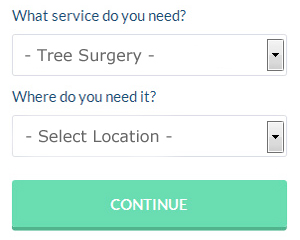Castle Donington Tree Surgeons (DE74) Leicestershire: Adding substance, style and structure to what can sometimes be a 2 dimensional area, trees are a crucial feature of gardens and properties in Castle Donington. But problems can develop when trees have been neglected or have been impacted by severe weather conditions, for example flooding or storms. Before any work commences, the best option is to consult with a certified tree surgeon in Castle Donington, when your trees need attention.
There's an enormous risk of damaging property, trees or even life, for folks in Castle Donington who attempt to do tree work themselves, or by using unqualified personnel. However, even for skilled tree surgeons who are aware of all the hazards, tree work is not entirely safe. Tree surgery is certainly not a task for novices, and on average there are 3 deaths and 140 severe injuries a year within the profession, making it one of the most hazardous jobs in the United Kingdom.
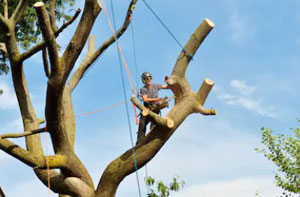
With around five people per year being fatally wounded by falling branches and trees in the United Kingdom, even a damaged or neglected tree can also present a threat to life. You may well be liable for any compensation to any third-party due to the consequences of your actions, if you bring in somebody to do tree work and there is an injury, or damage to property. The above are just some of the reasons why retaining the services of a trained Castle Donington tree surgeon to work on your trees is vitally important. (Figures sourced from HSE UK).
SELECTING A TREE SURGEON IN CASTLE DONINGTON - There are 2 trade bodies that a trained tree surgeon in Castle Donington should really be an approved member of. Both the AA (Arboricultural Association) and the ISA (International Society of Arboriculture) offers a website where you can check out the professional standing and membership of any tree surgeon. On this page you can check out membership of either of these bodies, which gives the tree surgeon in question, ARB Approved Contractor status.
You are able to get in touch with these professional organisations for arbitration assistance and for help and advice, if there's a problem at any stage during the work, or after it has been concluded.

You should respectfully decline the offer of a quote from anybody who you are unable to find on this directory list, and carry on your search for an approved and fully qualified tree surgeon. You should try to get at least 3 different price quotes from various companies in and around Castle Donington when you have reassured yourself of their professional qualifications and memberships. Whilst getting the quotes you should ask the below questions, making it abundantly clear that you need the answers due to the risks of the work involved:
- Would I be able to to contact somebody you have recently worked for, so that I can inspect your workmanship? Independently examining any recent work is always advisable.
- Can you provide me with a quotation in writing? You should NEVER settle for just a verbal quote. Only ever accept a written quote.
- Precisely what is your level of insurance cover? Your tree surgeon should be able to produce an insurance certificate covering at the least £5 Million public liability, as outlined by the ISA and AA.
- Can you provide documents to indicate that you've got the proper qualifications, membership of the AA or ISA, and also a certificate for basic chainsaw use from the NPTC/LANTRA? The NPTC/LANTRA certificate is required by law for any tree surgeon/worker who uses a chainsaw. A trained tree surgeon in Castle Donington could hold Certificates and National Diplomas in Arboriculture.
On the written quotation that you receive, you will need there to be clear and concise information on all the work that's to be undertaken. It should mention whose responsibility it is to remove waste, tree branches and stumps, and should also include details about any trees which could be protected in law, and the steps required to obtain permission to work on them. You should also make certain VAT has been included on the quotation. You have a responsibility to employ only qualified tradespeople to work on your trees and property, and it is crucial to understand that fact. This is stated under the "Common law duty of care responsibilities and sometimes liabilities under the Occupier's Liability Acts of 1957 and 1984."
PRIOR TO WORK BEGINNING - Checking whether any of your trees are covered by a protection order, your selected Castle Donington tree surgeon should make sure that any work gets the green light from the relevant local authority department. Finding a tree has protected status does not imply that work can't be carried out, because even protected trees need to be maintained so as to cut back dead or dying wood and ensure public safety.
A minimum of 6 weeks written notice is required to the Local Planning Authority (LPA) prior to any work being carried out, if your property in Castle Donington is in a designated conservation area. This is only applicable to trees with a stem diameter of over 7.5 centimetres in diameter, at a point 1.5m above ground level. If the thinning or pruning of a protected tree's branches are required in order to promote and sustain growth, written notice is also not necessary.
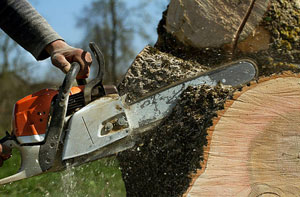
After fully assessing the health of your trees, your Castle Donington tree surgeon will determine the appropriate treatments and how the best outcome can be safely accomplished. This involves conducting a risk assessment to include public areas, your property and any sections of a neighbour's property that could be impacted by falling debris. The quantity of workers required and the level of protection needed, will also be determined at this point. This could include various safety measures together with personal protective equipment (PPE) to guarantee the safety of passers-by and nearby property.
ON THE DAY OF WORK - To keep unauthorised persons and passers-by away from the area of work, safety measures, barriers and cones should be put in place before any climbing, cutting of branches or tree felling begins. When there is a chance of debris falling onto a highway, it may be necessary to halt the traffic temporarily.
Different types of tree work will require the tree surgeon to have different levels of protection. At the bare minimum they'll be wearing specialist protective clothing to avoid serious cutting injuries to the legs, torso and hands, when working with a chainsaw. Hi-vis clothing, and head and eye protection, should be worn by all operatives involved in the work.
Safety climbing equipment and ladders will need to be deployed if any working at height is involved, and to help in the removal of high branches and sections of tree trunk, additional operatives will be essential. For taking waste materials away from the area, a skip or truck will be stationed as close to the work area as possible. This need for easy access is a good reason to inform your neighbours of the work.
UPON COMPLETION OF WORK - The area can be cleared of any debris, and all of the waste materials can be taken away, when all the work has been accomplished. A certificate of work done will then be created by your tree surgeon, especially when the trees are protected, which can be signed off and a copy presented to you. If any public spaces needed safety measures, this protection will be removed and pathways and roads will be re-opened.
If you've got any problems or issues with the completed work, you should first take them up with your tree surgeon so that they can be put right straight away. If your tree surgeon is a member of a professional association, and any further arbitration is required, you can get help and guidance from the Arboricultural Association or the International Society of Arboriculture so as to reach a satisfactory conclusion.
Local Castle Donington tree surgery services will most likely have the dialling code 01332 and the postcode DE74. They will operate in Castle Donington itself, in addition to nearby areas such as Great Wilne, Tongue, Cavendish Bridge, Kegworth, Melbourne, Weston-on-Trent, Wilson, Shardlow, Hemington, Kings Newton, Aston-on-Trent, Diseworth, Lockington, Isley Walton, and these postcodes: DE74 2HJ, DE74 2QR, DE74 2LQ, DE74 2QW, DE74 2JY, DE74 2NQ, DE74 2GN, DE74 2GP, DE74 2UR, DE74 2AT. Verifying this can make sure that you are accessing a local tree surgeon. Castle Donington householders can utilise these and numerous other similar services.
If you require this kind of assistance it's unquestionably far better to use an experienced local tree surgeon. Castle Donington home and business owners can benefit greatly from the expertise and knowhow that are the trademark of a trained professional.
Removal of Tree Stumps Castle Donington
If you're in a situation where you need to have a big tree chopped down and removed from your property in Castle Donington, you're probably going to be left with a stump, which will also have to be sorted out. You might be thinking of using the tree stump as a garden seat or some other useful feature, and might be quite happy to leave it in place until it eventually rots away. However, stumps left in your garden can attract undesirable pests, be a trip hazard, and can even produce new suckers in an attempt to regrow.
Stump removal and stump grinding are the 2 key choices, if you do elect to get rid of the tree stump entirely. Below we'll be looking at the removal solution.
With regards to getting rid of a tree stump, the three primary methods are chemical treatments, digging out by hand or burning. You could make use of any one of these techniques if you're intending to remove the tree stump by yourself. If a local tree surgeon is going to be carrying out the work, stump grinding is generally their method of choice, however eco-plugging or some other chemically based treatment might be suggested.
Digging Out by Hand: Digging out a stump by hand calls for a few tools such as a pointed shovel, a chainsaw, a handsaw and loppers. It involves digging down to uncover the roots, chopping the roots with a saw or loppers, and ultimately releasing the stump, to make it easier to get out. Some kind of winch may be required for the final lifting process. This has a tendency to be tiring and tedious work, and should not be tackled unless you are fit for the task.
Chemical Stump Killers: If you opt for the chemical removal option, you will need to get hold of Resolva Xtra Tough Tree Stump Killer, Roundup Tree Stump Remover or Vitax SBK Stump Killer. Always read and closely follow the manufacturer's instructions for applications, rates and timings for these chemical solutions, and be aware of the fact that they're toxic and often inflammable. The stump will take several weeks to rot and can then be removed with a spade and axe.
Burning a Tree Stump: Be very careful if you choose this technique for stump removal, as stump burning can be fairly dangerous and might be at variance with local laws. Several 1" holes will have to be drilled into the tree stump, and over a period of several days regularly topped up with vegetable oil. You can then heap charcoal around the tree stump and set it alight. But, this should be checked continually and not left unwatched. When the fire has burnt out, you must ensure that it is fully extinguished and cool, after which you can dig out the charred stump remains and roots.
An alternate method is scooping out all the soil from beneath the stump and lighting a fire in the cavity underneath. None of these stump burning techniques should ever be used if the stump is close to buildings, other trees or fences.
Dutch Elm Disease
Devastating tree stocks and wiping out tens of millons of precious elm trees right through the UK during the last 50 yrs or more, Dutch Elm Disease (Ophiostoma novo-ulmi) is not so widespread now, as it was previously. Spread by the elm bark beetle (Scolytus) and caused by the fungus Ophiostoma novo-ulmi, Dutch Elm Disease was inadvertently introduced into the British Isles from Canada in the late 1960s.
Through the nationwide transportation of elm products like crates, mulching bark, saplings, and firewood logs with the bark still attached, it was rapidly spread through the British Isles after its initial arrival. This horrible disease didn't just affect elms in the British Isles, but also devastated elm stocks in mainland Europe and North America. Although the origins of DED are as yet uncertain, the suspicion is that it first originated in Asia (most likely Japan).
The signs of DED typically show up first in early summer, and can be recognised by:
- Twigs that turn into a "shepherd's crook" shape.
- New shoots that die back from the tips.
- Twigs with spots or rings in cross-section.
- Foliage that turns yellow, shrivels and dies.
The spread of Dutch Elm Disease has been slowed down by the felling and removal of infected, dead and dying trees, which has essentially eradicated the elm bark beetle's favourite habitat. There's currently a continuing project for the propagation of young elms that are so far resistant to Dutch Elm Disease.
You can speak to your local tree surgeon for guidance and advice, if you suspect you may have infected elm trees on your property in Castle Donington, or you can put in a request for a diagnosis from the THDAS (Tree Health Diagnostic and Advisory Service), for which you will be charged.
Tree families affected: Ulmacae and Zelkova.
Vectors - beetles of the Scolytus family.
Cause - fungi Ophiostoma Ulmi & Ophiostoma Novo-Ulmi.
Skills and Knowledge Needed to be a Tree Surgeon in Castle Donington
- Be professional and capable of completing tasks within a specified period.
- Be able to work well with your hands.
- Have the ability to maintain, repair and use tools and machinery.
- Being able to work alongside others.
- Be aware of the complexities and dangers involved with the various aspects of work.
- Physical skills like movement and coordination.
- To be able to undertake basic tasks on a computer or hand-held device.
- Have patience and the ability to stay calm and focused in stressful situations.
- Good knowledge of public security and safety.
- Have a methodical and organised working approach.
- Decent customer skills.
Air-Spading Castle Donington
When you have concerns about a tree's health, this may be down to any one of a number of problems, but it is frequently because of issues with the root system. Easy accessibility to the roots of your tree will be necessary for a certified Castle Donington tree surgeon to check for soil compaction, root rot and other plausible issues.
Until recently this was quite tricky, because of the possibility of damaging the roots during the process of digging down. Several modern day tree surgeons in Castle Donington use a system called "air spading", which employs compressed air to efficiently break up and strip away compressed soil without the risk of damage to the tree's roots, or any underground utilities that happen to be nearby.
On occasion, building work, passing vehicles or heavy foot traffic can cause the soil around a tree's roots to get compacted, and this is known to adversely affect its health. When it doesn't get enough water and nutrients, a tree can quickly become "stressed", making it more vulnerable to attacks by diseases, insects and pests. Air spading is also a good technique for resolving root flare problems, when the flare around the base of the stem becomes covered with an excess of soil, causing it's tissues to break down, and heightening the chances of root decay.
This ingenious process involves the use of an air compressor and an air-spade tool which directs air into the soil at a speed of 1,200 mph, the air enters the voids in the soil and quickly breaks it apart, while leaving tree roots and utilities unaffected. The flow of air blows the soil away from the roots, allowing immediate inspection and assessment. A less compact layer of wood mulch and fertiliser can then be put in to revitalize the tree, and a resolution implemented for any issues.
A Tree Surgeons's Day to Day Duties
- Create on-site or telephone quotes for clients.
- Be proficient with power tools and powered machinery.
- Tidy up site upon completion and remove waste from customer's site.
- Work with customers and complete administration tasks.
- Produce tree survey reports for both domestic and commercial clients.
- Climb trees to prune or remove branches.
- Maintain and service equipment like chippers and chainsaws.
- Tree planting and transplanting.
- Fell and remove trees and grind stumps.
- Evaluate the health of trees and create plan of action.
- Establish dangers posed by trees.
- Cut and chip branches and logs.
Wood Chipping Castle Donington
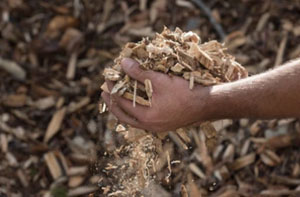
To reduce the tree limbs, vegetation and branches that tree surgery creates, the majority of professional Castle Donington tree surgeons will regularly use wood chipping machinery. These impressive wood chipping systems can gobble up as much as forty tonnes of material each hour, depending on what equipment is being used, however the most frequently used machines will process closer to 5 tons every hour.
Chipping down the timber in this way makes it much easier to transport and also produces a valuable by-product that can be used for various purposes including, mulch in gardening, wood pulp, garden walkways, cultivating mushrooms, weed prevention, biomass solid fuel, ecosystem restoration and landscaping.
If you have a good use for the wood chips which have been produced during your tree surgery assignment, most tree surgeons in Castle Donington will be very happy to let you have however much you need, and they will take away the remainder to use in other locations, or dispose of as they see fit. As I'm sure you will have realised by reading this article, tree surgeons are a great source for wood chippings that you can use in your garden in Castle Donington, whether or not you actually need tree surgery. Wood chippings are quite often available from tree surgeons free of charge, although if you need to have them delivered there will likely be a fee.
Wood chipping equipment is manufactured by various companies, some of the most recognised makes include T-Mech, Timberwolf, Crytec and Forest Master. (Tags: Wood Chips Castle Donington, Wood Chippers Castle Donington, Wood Chipping Services Castle Donington, Wood Chipping Castle Donington).
Coming Soon: Tree pruning Castle Donington.
Tree Surgery Tasks Castle Donington

Castle Donington tree surgeons will likely help with root removal, airspading, tree transplanting, tree planning in Castle Donington, tree care services, dead wood removal Castle Donington, site clearance, tree pest control, root pruning, tree dismantling, hedge cutting in Castle Donington, tree removal Castle Donington, hazard assessments Castle Donington, eco plug treatments, tree health monitoring in Castle Donington, hedge reduction in Castle Donington, woodland management, hedge lowering, vegetation management, drop crotching Castle Donington, landscaping, tree management in Castle Donington, tree surveys Castle Donington, hedge laying in Castle Donington, tree work, tree felling, tree watering Castle Donington, pollarding, tree bracing, landscape clearing, crown lifting Castle Donington, crown reduction Castle Donington, tree staking, crown removal, tree shaping in Castle Donington and other tree surgeon services in Castle Donington, Leicestershire. These are just a handful of the tasks that are carried out by a local tree surgeon. Castle Donington companies will be happy to inform you of their full range of services.
Latest Tree Surgery Projects
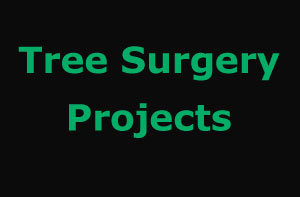
In Ashby de la Zouch, Laurence and Paisley Swales are on the lookout for an expert who will cut back a 30m length of beech hedge to a manageable height. Ms Lina Roberts was looking to get a price quote from a tree surgeon in Leicester Forest East who can remove and dispose of a thirty foot monkey puzzle tree in the garden of her terraced house. Oliver and Ariella Lovell were trying to get an estimate from a tree surgeon in Lubenham who can completely remove a conifer and a willow tree, and trim back several other conifers in the garden of their bungalow. Lawson Elder was looking for local tree surgeons near Anstey, Leicestershire. Essa Redfern was looking for someone who can do tree surgery in Kibworth Beauchamp. Mr Nicolas Carroll from Desford, Leicestershire needs to hire somebody who can remove a really large tree ASAP. Travis and Lucie Lambert were hoping to get a quotation from a tree surgeon in Thurmaston who can cut back an acacia tree that's overgrown a next door neighbours garden in their detached house. Summer Doran in Ellistown asked us "is there a professional tree surgeon near me?".
Tree Surgeons Near Castle Donington: Also find: Lockington tree surgeons, Hemington tree surgeons, Kings Newton tree surgeons, Aston-on-Trent tree surgeons, Shardlow tree surgeons, Melbourne tree surgeons, Great Wilne tree surgeons, Weston-on-Trent tree surgeons, Isley Walton tree surgeons, Cavendish Bridge tree surgeons, Tongue tree surgeons, Wilson tree surgeons, Kegworth tree surgeons, Diseworth here. All of these locations are served by an experienced tree surgeon. Castle Donington residents can get quotations by clicking here.
Tree Care Services Castle Donington
- Castle Donington Arboriculture
- Castle Donington Tree Dismantling
- Castle Donington Tree Watering
- Castle Donington Root Decompaction
- Castle Donington Tree Shaping
- Castle Donington Woodland Management
- Castle Donington Tree Pollarding
- Castle Donington Dead Wooding
- Castle Donington Tree Care
- Castle Donington Air-Spading
- Castle Donington Tree Felling
- Castle Donington Tree Inspections
- Castle Donington Woodland Clearances
- Castle Donington Shrub Maintenance
Tree Surgeons Around Castle Donington: In Devon Lane, The Moat, London Road, Cheribough Road, Anson Road, Haulton Drive, Harvey Road, Bentley Road, Moira Dale, Kirkland Close, Meadow Crescent, Cooks Drive, Cedar Road, Park Lane, Upton Close, Campion Hill, Tipnall Road, Castle Hill, Bondgate, Hallam Fields, Hillside, Peartree Close, Tanyard Close, Vanguard Road, The Hollow, and in the following Castle Donington area postcodes: DE74 2HJ, DE74 2QR, DE74 2LQ, DE74 2QW, DE74 2JY, DE74 2NQ, DE74 2GN, DE74 2GP, DE74 2UR, DE74 2AT, tree surgeons were just recently conducting specialist tree surgery tasks. These places recently saw activity by a qualified tree surgeon. Castle Donington residents benefited from trusted and reliable tree surgery services in all cases.
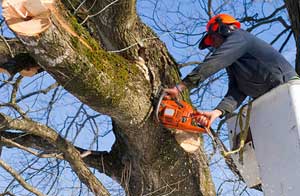 Tree Surgeon Castle Donington
Tree Surgeon Castle Donington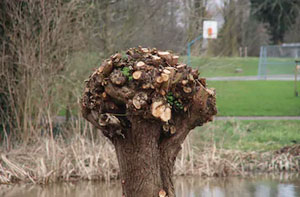 Tree Care Castle Donington
Tree Care Castle Donington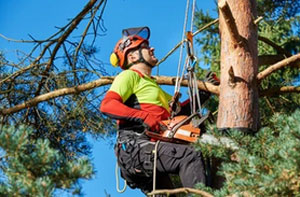 Tree Surgery Castle Donington
Tree Surgery Castle DoningtonIf you would like to get local info relating to Castle Donington, Leicestershire check here
More Leicestershire Tree Surgeons: Leicestershire tree surgeons: Mountsorrel, Aylestone, Enderby, Earl Shilton, Wigston, Narborough, Barrow upon Soar, Measham, Syston, Thurmaston, Hinckley, Barwell, Broughton Astley, Melton Mowbray, Groby, Countesthorpe, Markfield, Market Harborough, Whetstone, Anstey, Glen Parva, Market Bosworth, Ibstock, Leicester, Fleckney, Shepshed, Loughborough, Blaby, Quorn, Glenfield, Ashby-de-La-Zouch, Braunstone, Lutterworth, Castle Donington, Coalville, Burbage, Oadby and Sileby.
Tree Surgery DE74 area, telephone code 01332.
TOP - Tree Surgeon Castle Donington
More Trades: Gate Fitters - Gutter Cleaning - Tilers - Carpet Fitters - Carpenters
Arboriculturalist Castle Donington - Tree Surgeon Castle Donington - Vegetation Control Castle Donington - Tree Reshaping Castle Donington - Stump Grinding Castle Donington - Tree Removal Castle Donington - Tree Surgeons Castle Donington - Tree Surgeon Near Me - Tree Management Castle Donington





